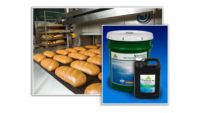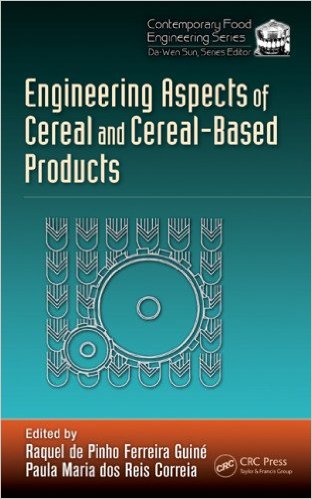
In snack and bakery facilities, proper lubrications must be able to handle extreme heat and other conditions while preventing extremely bad situations such as product recalls.
Nobody truly appreciates maintenance and sanitation until something goes seriously wrong, and only a few people really care about lubrication until something breaks and all hell breaks loose.
“Let’s face it. Lubrication is the low man on the totem pole until there is a failure, and then it’s, ‘Whoa, whoa, whoa, whoa. Our line is down. How can this be?’” says Kimberly Eldridge, food market manager for Klüber Lubrication North America, Londonderry, N.H.
Then again, it could be worse. Relying on improper procedures such as using a non-food grade lubricant instead of a National Sanitation Foundation or NSF H1 food grade material can result in something as nightmarish as a recall if the wrong material gets into the food stream. Such an event can devastate a brand and cost millions of dollars to fix.
Certainly, that’s an extreme situation, but mistakes happen. Sometimes they can be little ones and sometimes they’re the mothers of all mess ups.
That’s why sanitation and maintenance is getting a little bit more lovin’ than it has gotten in the past. In fact, sanitary design is taking on a greater importance even when it comes down to purchasing the equipment. Maintenance and sanitation have become two issues that are no longer taken for granted.
“Instead of simply, ‘we want a machine that lasts longer and allows us to produce more,’ there is an added piece in there on the sanitation side that is part of their cost-benefit calculation today,” Eldridge says.
With the focus on streamlining operations, lowering overhead and searching for new ways to squeeze out profits in a discount-heavy marketplace, many companies are pushing their production lines to the limit and sometimes under more extreme circumstances than in the past. That’s putting a greater burden on maintenance personnel as well as for the lubricants that companies need to use to keep their lines humming.
In other cases, advances in technology require new or custom-made lubricants to handle the extra workload, says Roger Tucker, product manager for Clarion Lubricants in Houston, Texas. Maintenance managers need to evaluate all parameters such as heat, speed and load before determining what type of lubricant to use.
“Much of the newer automated equipment, including that used by bakers and snack producers, runs at higher speeds and with greater precision and tighter clearances than the older equipment it replaced,” he says.
Clarion’s lubrication solutions offer a wide array of synthetic and white oil-based food grade lubricants and greases that can meet the demands of difficult environments found in snack and bakery facilities.
However, different equipment often requires specific lubricants and some of them with additives to withstand the extreme heat of a tunnel oven, the combination of heat and humidity in a proofer or a makeup system that requires a chemical washdown, Eldridge says.
More often than not, the initial challenge that many lubricant companies face involves the most extreme variables that can happen in a certain application. That’s why companies like Klüber offer more than a dozen lubricants for chains, bearings, electric motors, gearboxes, compressors and hydraulics that are typically found just in a bakery’s proofing systems as well as various types of ovens, chillers and freezers.
In addition to optimizing operational reliability, application-specific lubrication can conserve energy, extend maintenance intervals and even reduce lubricant consumption.
“That’s why there needs to be so many products,” Eldridge says. “You may have a pretty basic portfolio of products that will hit all of the general purpose [applications], but the minute you start adding them to different situations, like a proofer with that moist, humid environment that can eat away at a lubricant, you need something that can resist water, that’s still H1 and that’s also resistant to the food that may be circulating in the air,” Eldridge says.
For some applications, synthetic lubricants may be the solution, Tucker says. Although they tend to be more expensive initially, they can extend maintenance interval and possibly reduce maintenance labor in the end, he adds.
Others such as Lubrication Engineers Inc. just came out with its Sheerplex lubricant, which is NSF H1 registered, kosher Pareve-certified and can be used in U.S. Department of Agriculture-inspected facilities. It’s designed for wide operating temperature ranges from -20˚F to 400˚F, according to the Fort Worth, Texas-based company.
Good manufacturing practices provide the foundation for preventive maintenance, and they can eliminate downtime if coupled with a proactive lubrication program rather than a reactive one, Tucker notes.
Moreover, avoiding shortcuts and careless errors can keep an operation humming.
“The most common mistakes include cutting corners on lubricant quality and the use of incorrect lubricant for the application,” Tucker says. “The way to avoid these pitfalls is to determine the required lubricant quality based on the equipment manufacturers’ recommendation, and then making sure the lubricant being purchased meets those requirements.”
Improper handling of lubricants also can lead to a component failure. For instance, a host of airborne materials can contaminate a lubricant from the time it leaves the lube storage room to when its application takes place.
“If you walk around a facility, you might see an open oil drum sitting somewhere or someone walking with a bucket and it’s filled with a very good lubricant, but from the time it takes from the lube room to the application point, you may have flour dust in it, and all of these things in it so you are putting a degraded product on your application,” Eldridge says.
In the end, she adds, less is more.
“The less you have to monkey around with anything, the better off you are from a sanitation standpoint,” Eldridge says. “We want to use less product. You’ll have less to clean up and less to dispose when it’s finished being used.”
*Photo courtesy of Klüber Lubrication North America



